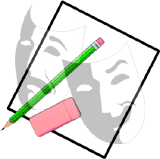|
Each year, English teachers will ask their students to write
book reports, essays that review and critique a novel that they
are studying in class.
If your students approach book reports with limited enthusiasm,
you might want to try another way to introduce the concepts of
critical writing. Encourage your students to become arts and
entertainment writers!
The book report follows a basic structure:
- Introductory statement: In the opening paragraph, the writer
offers a description of the book and explains why reading this
book was a positive or negative experience. This is the reviewer's
thesis.
- Body of the critique: In the next few paragraphs of the essay,
the reviewer sets out to prove that thesis. If the book was excellent,
the reviewer will focus on the elements that make it work so
well, including characters, scenes, dialogue, description, pace,
plot line, and theme. If the book was flawed in some way, the
reviewer will try to establish that by offering evidence of those
flaws.
- Conclusion: At the end, the writer leaves the reader with
an overall opinion of the book and a recommendation on whether
or not the book is worth reading. The reviewer may discuss some
of the thoughts and feelings he or she was left with after reading
this book.
That same approach can be used to critique any kind of artistic
activity whether it's a book or writing of any kind, live performance
(dance, music or theatre), recorded music (cds), or visual art.
Here are some suggestions for your students as they
set out to write a review:
- Don't re-tell the entire story when you are reviewing a play,
novel or movie. You can usually give the reader a sense of what
the plot is in a few sentences. Then, you can move on and explore
the way the writer handled the story and what the writer did
to make the characters and story come alive.
- Don't tell the reader that the play was great, the concert
was boring or the book was exciting. Show them why you
think that way by giving examples from the work itself and offering
reasons for your opinion.
- Compare and contrast the book (or cd or play) in question
to others in its genre to give your reader a sense of how it
stacks up. If you are reviewing a cd by a new singer/songwriter,
you may want to compare their music to an artist that your readers
will be familiar with.
- Do a little research about the artist to give yourself a
better sense of who they are and why they write, paint or sing.
Those details may add to your review and give your readers a
full appreciation of the work and the artist.
Once your students have written a review, give them an opportunity
to share it with a wider audience through your school newspaper
and SNN. SNN publishes monthly and regularly features arts and
entertainment reviews. For more information, contact the SNN
coordinator at: snn@stemnet.nf.ca
.
|


